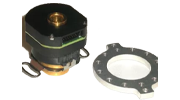Quantum Devices Incremental Optical Rotary Encoders

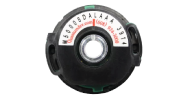
Incremental Optical Rotary Encoder Basics
Incremental optical rotary encoders, also known as shaft encoders, are electromechanical position feedback devices. The output data they generate provides information to control systems and allows them to determine position, speed, acceleration, deceleration and travel distance in motion control applications.
An optical encoder consists of the following components: a moveable disc, an LED (Light Emitting Diode) source, a photo detector and a signal processor that converts the analog waveforms to digital waveforms.
The encoder disc, or code wheel, has a pattern of spaces, called windows, on it. When the LED light passes through one side of the disc, the photodiode detects interruptions. The photodiode creates analog signals which are processed and digitized for use by external control devices.
What are Incremental Optical Rotary Encoders Used For?
Industrial and commercial applications that use optical rotary encoders include:
- Aerospace & Defense
- Automated Guided Vehicles (AGV)
- Autonomous Mobile Robots (AMR)
- Conveyor Applications
- Elevators
- Factory Automation
- Galvanometer Scanners
- Industrial Controls
- Medical Devices
- Off-Highway Vehicles
- Oil & Gas
- Passenger Rail
- Pulp & Paper Mills
- Robotics
- Rotating Radar Platforms
- Servo Motors
- Steel Mills
- Stepper Motors
- String Potentiometers
- Wood Processing
Learn more about optical encoder applications or contact us for help selecting the best encoder for your specific project.
Rotary Encoders
Rotary encoders, also known as shaft encoders or transmissive rotary encoders, are electromechanical position feedback devices. The output data they generate provides information to control systems and allows them to determine position, speed, acceleration, deceleration, and travel distance in motion control applications.
They’re called rotary encoders because they measure how far something turns (like a servo motor shaft). This measurement of distance around an axis is called angular position.
Incremental Encoders
An incremental encoder is a type of rotary encoder that indicates motion and direction. Incremental encoders work by generating A/B output signals based on a specific number of pulses per rotation. In this way, the angular motion of the shaft is converted into a code (encoded) to determine its position or motion.
Incremental encoders provide information about rotary motor speed and distance. They’re commonly used for industrial motion control applications.
Rotary Encoders: Incremental vs. Absolute
An incremental rotary encoder is different from an absolute rotary encoder in the type of information it measures. Incremental encoders measure change in position. Absolute encoders indicate the absolute position, which is a designated starting point. Because the absolute or “zero” position of the shaft is recorded, an absolute encoder provides position data even after a power failure, or if the shaft moves while the encoder is turned off. Incremental encoders require a reset or reference position every time they’re turned on, to locate their position in rotation.
Optical Encoders
An optical encoder is a type of rotary encoder that uses an LED light source, a photodetector (light sensor), and a moveable disc with slotted openings to generate and count light pulses as the shaft turns. Optical encoders are used to measure position, velocity, and acceleration in a variety of applications.
Optical rotary encoders are extremely precise and offer higher resolution (accuracy), making them ideal for applications like machine tools, robotics and CMMs (coordinate measuring machines).
If you’d like to learn more, dive into the technical details behind how optical encoders work or explore:
- Waterproof rotary encoder
- High-resolution encoders
- Miniature rotary encoders
- Quadrature encoders
- Programmable encoders
- Low-profile rotary encoders
- QM35 EZ-Comm Optical Rotary Encoder

- QML35 EZ-Comm Optical Rotary Encoder
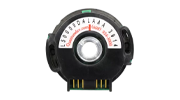
- QM35 Optical Rotary Encoders

- QML35 Optical Rotary Encoders
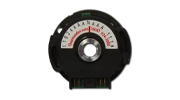
- QM22 Optical Rotary Encoder
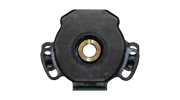
- QR145 Optical Rotary Encoder

- QR200 Optical Rotary Encoder
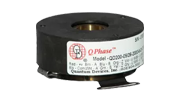
- QDH20 Optical Rotary Encoder
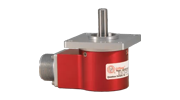
- QR12 Optical Rotary Encoder
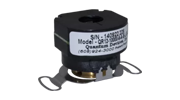
- LP12 Optical Rotary Encoder

- HR12 Optical Rotary Encoder
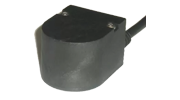
- JR12 Optical Rotary Encoder
